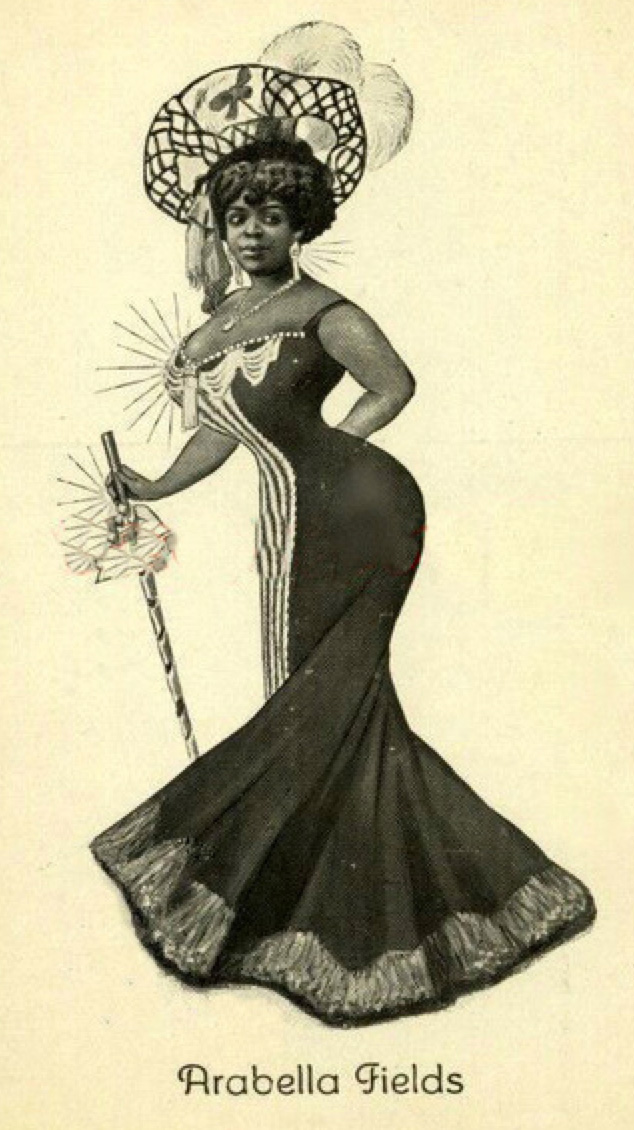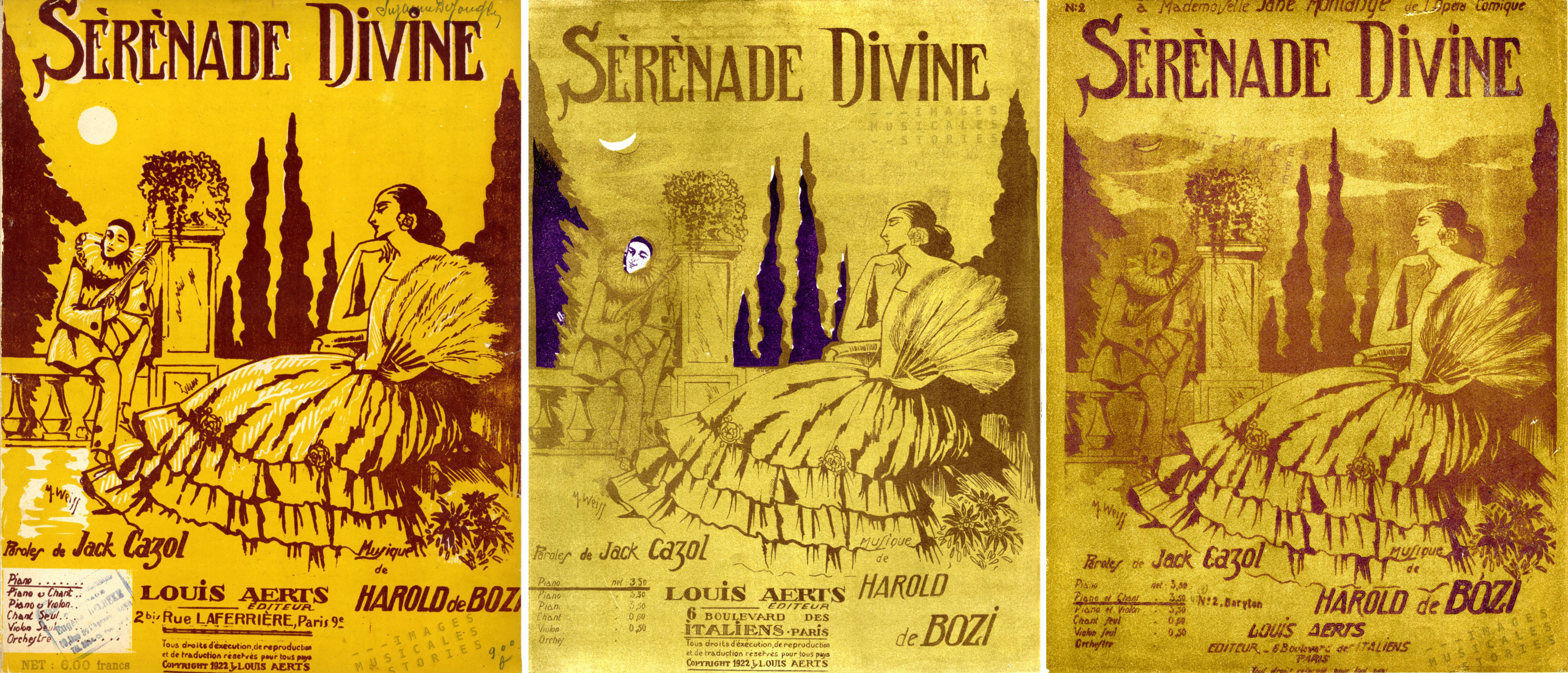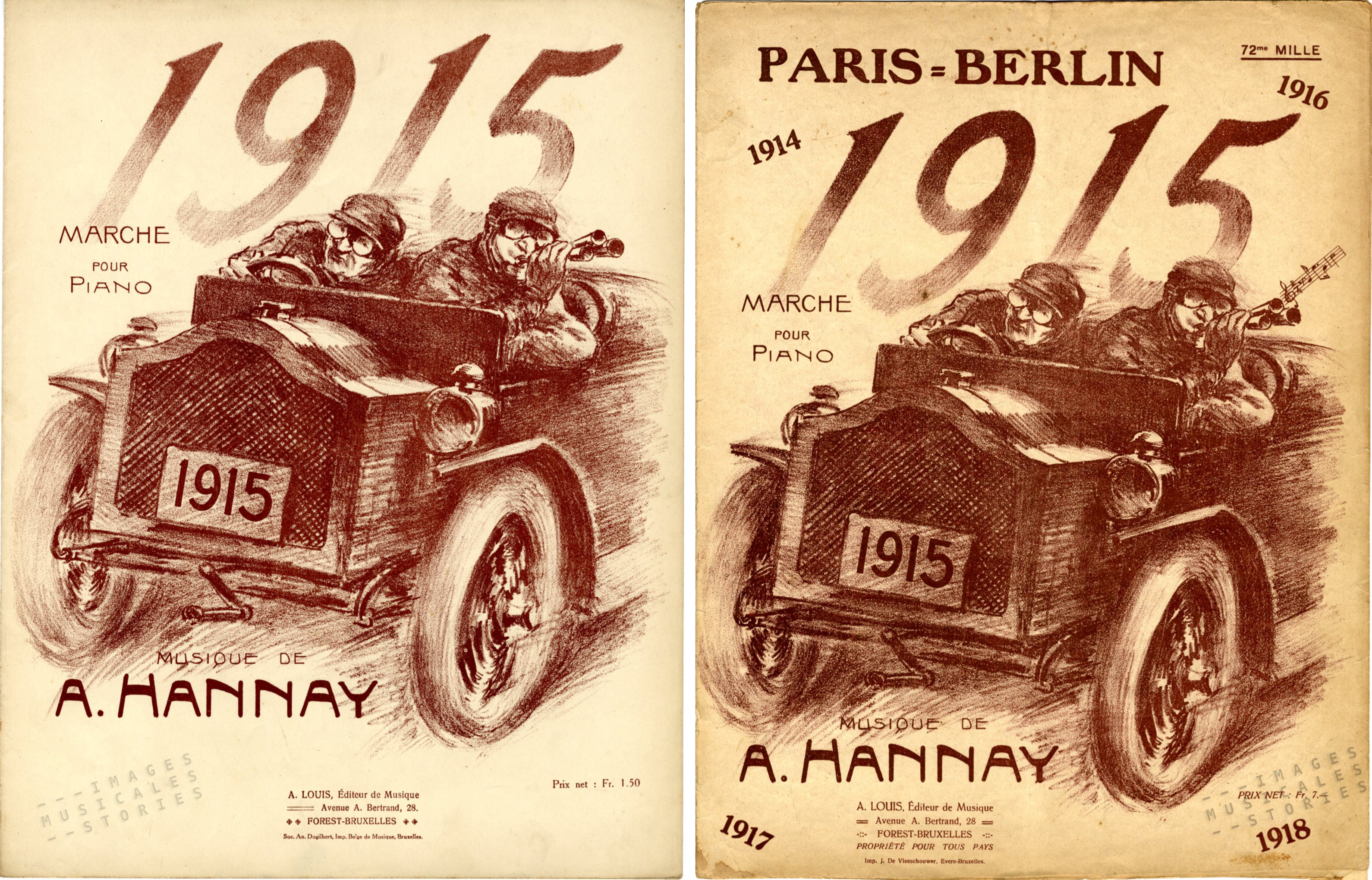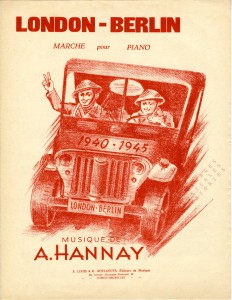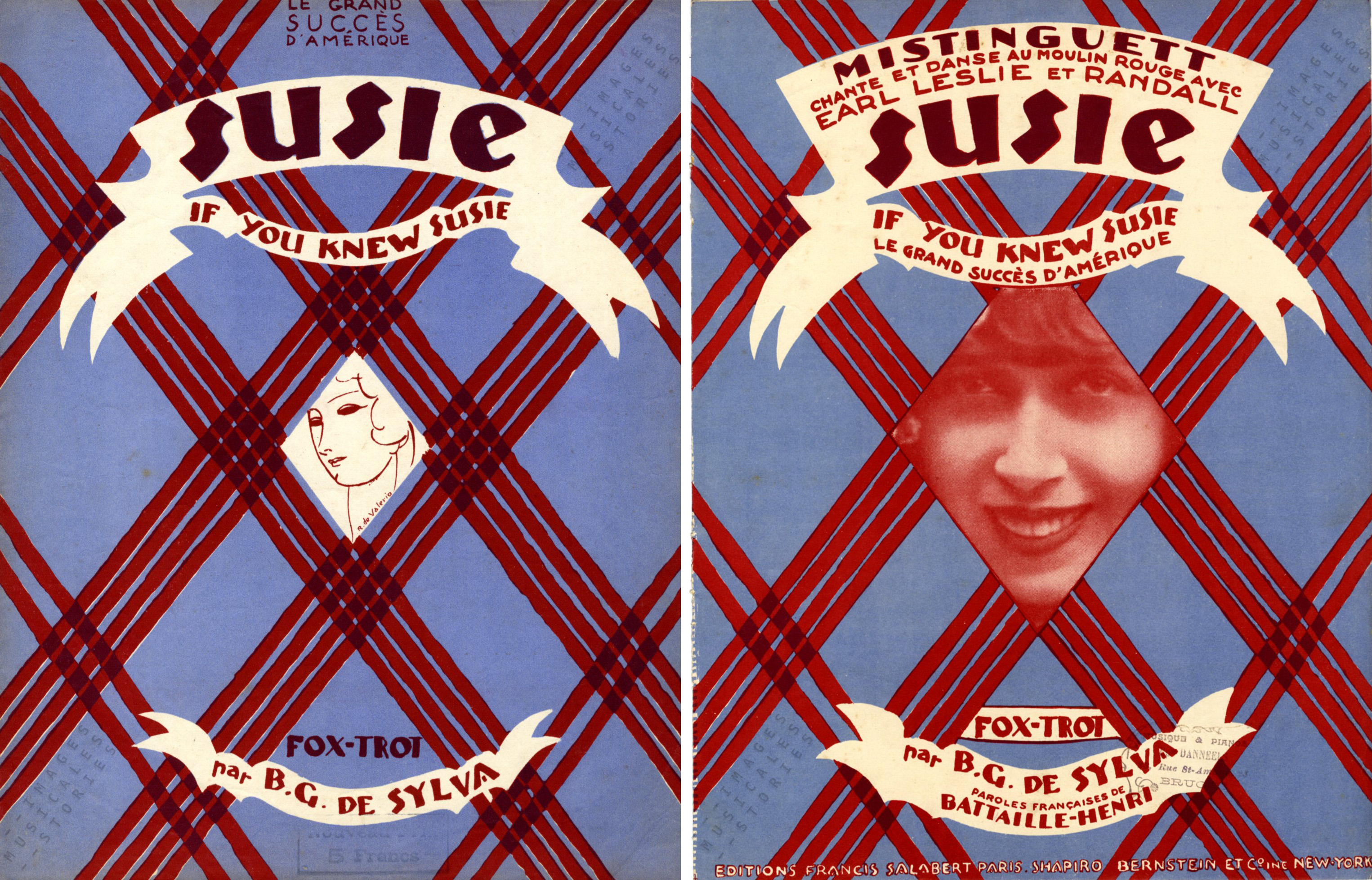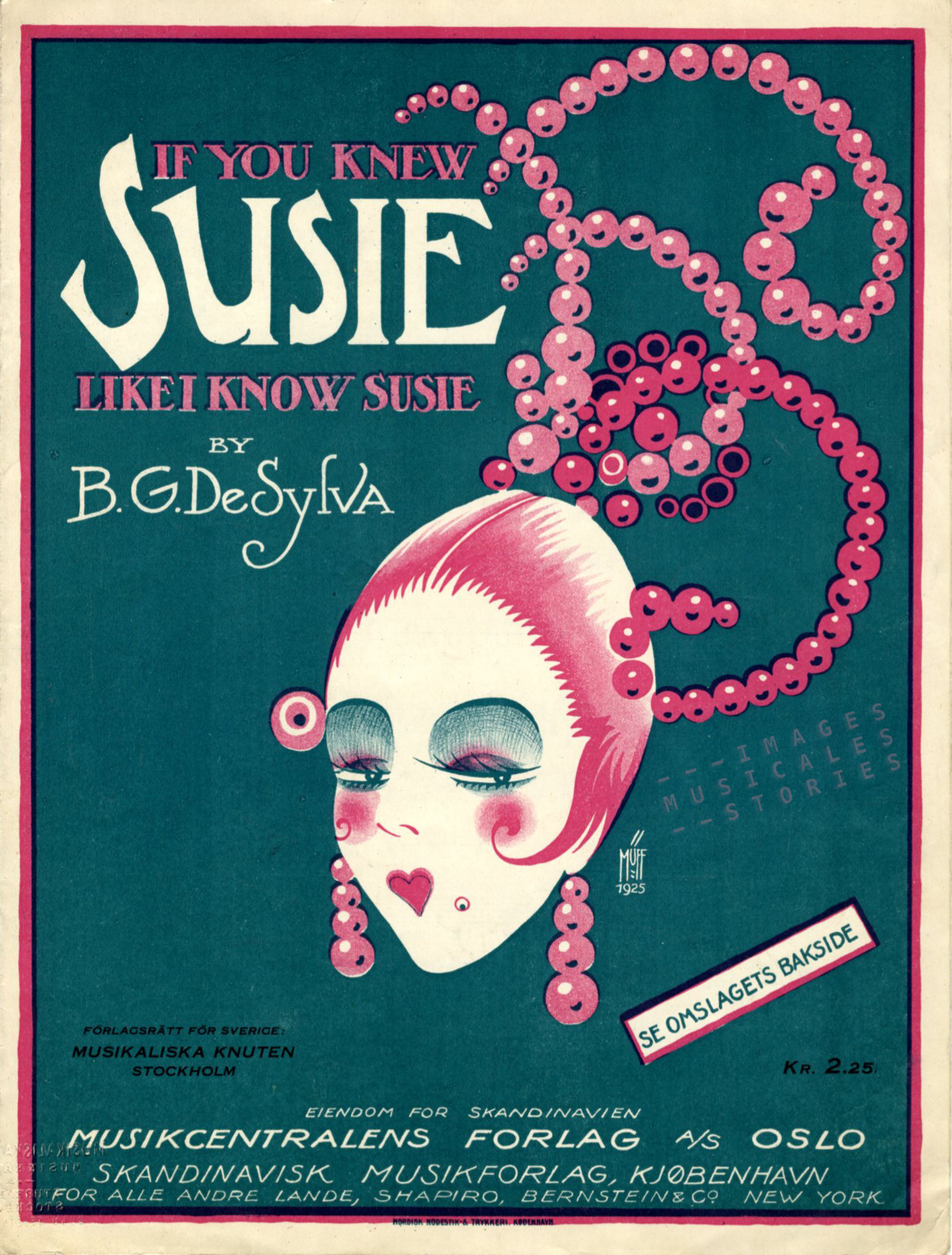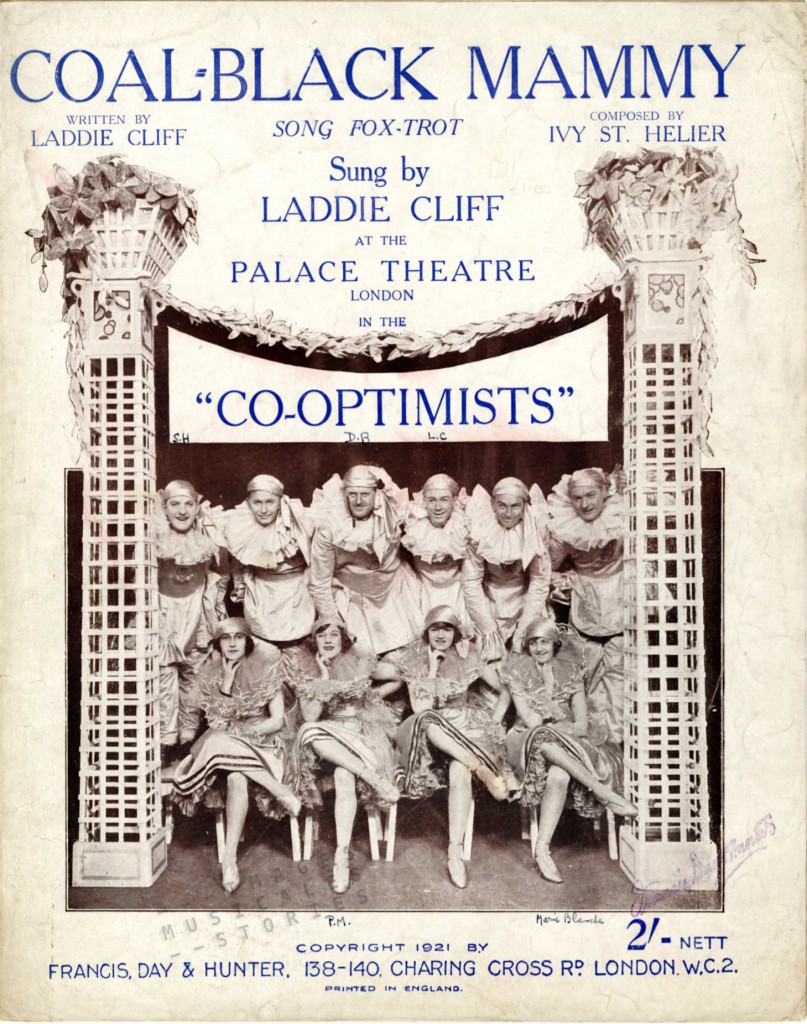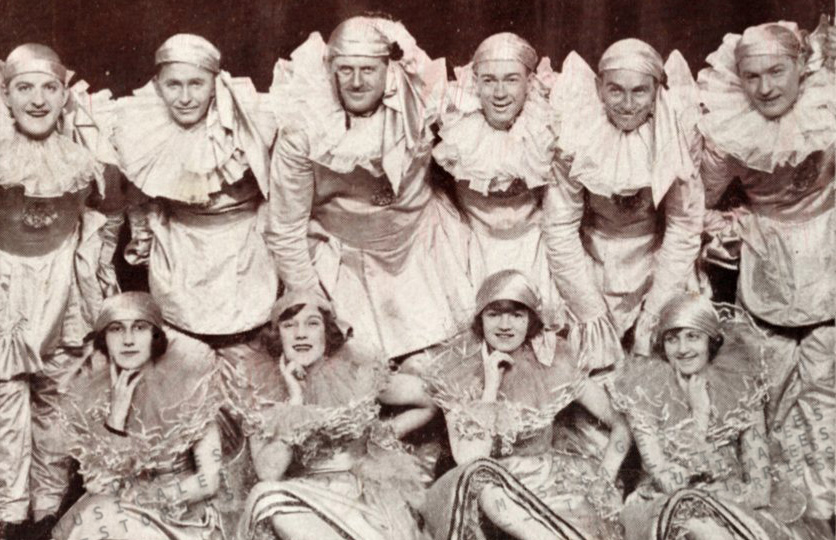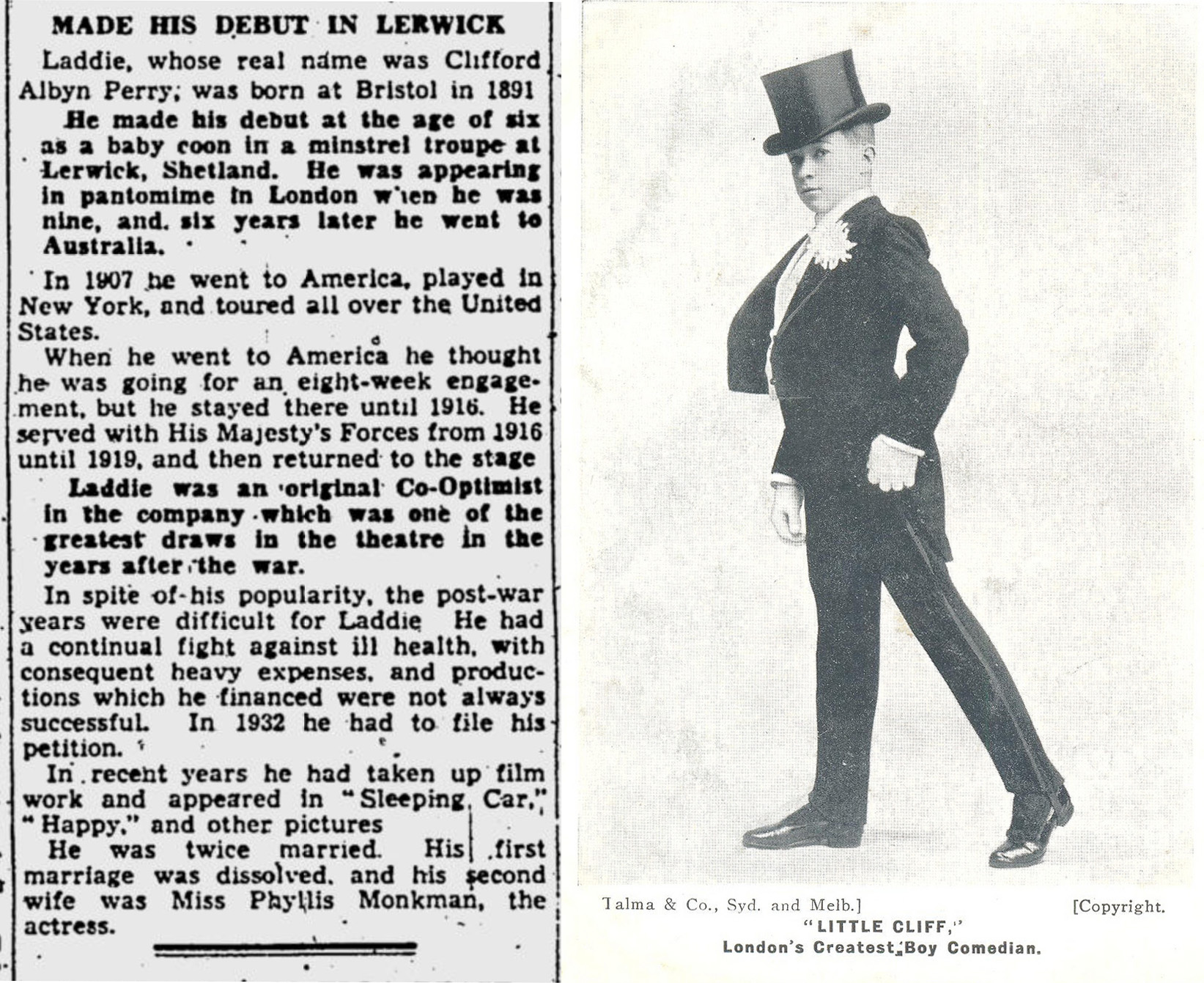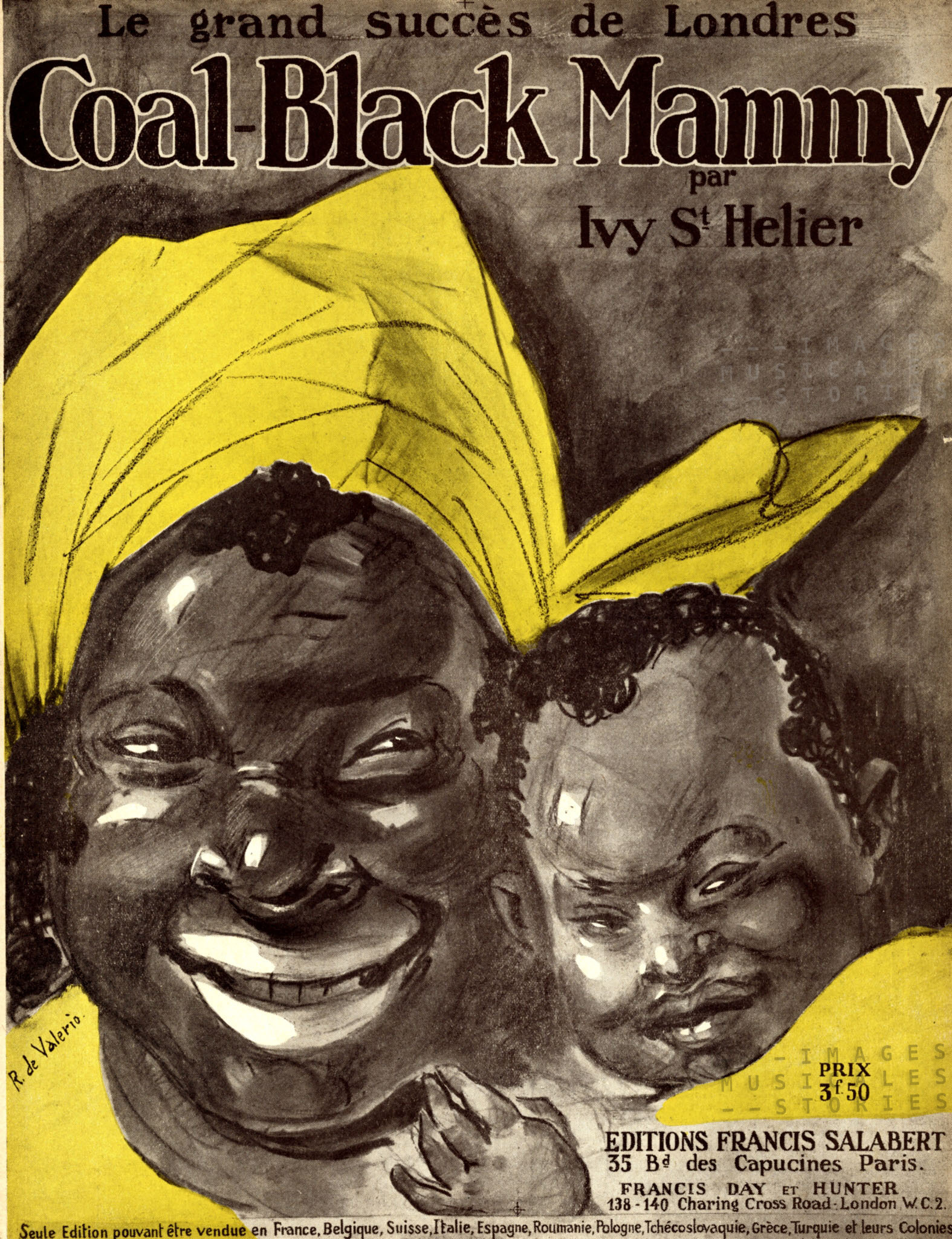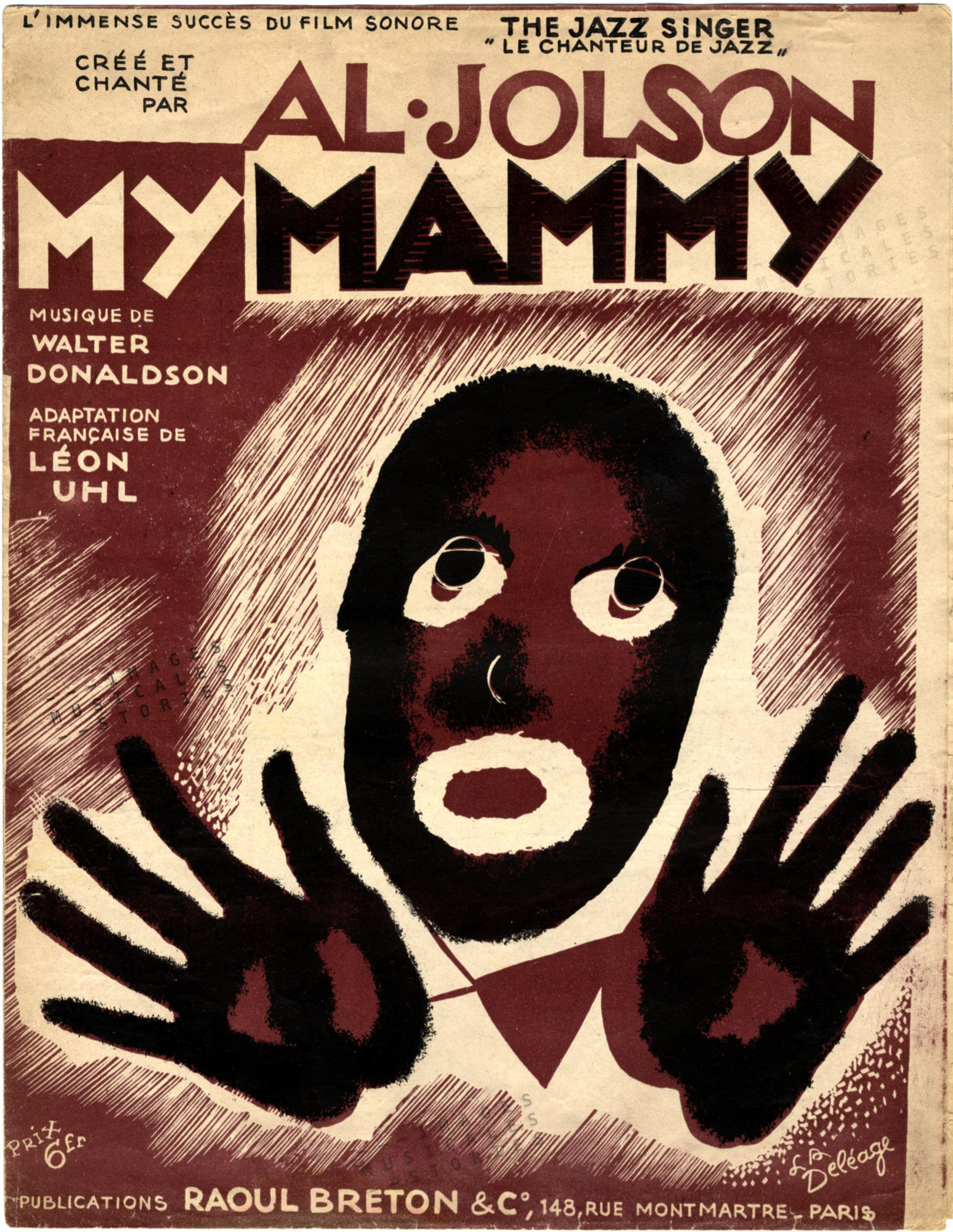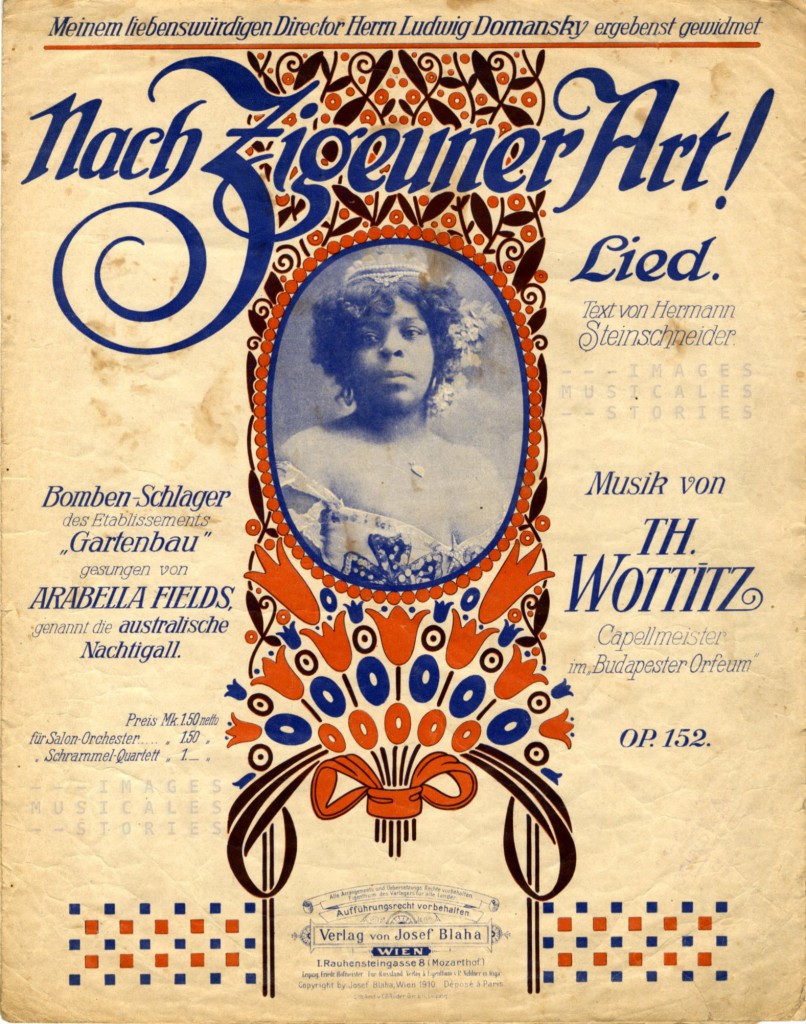
Arabella (or Belle) Fields was an early Afro-American performer in Europe. From the 1890s to the 1920s she toured as The Black Nightingale. She was born in Philadelphia but added to her mystique by presenting herself alternately as an African, Red Indian, Indian, American, South American, German-African or an Australian. On this Austrian sheet music cover she presents herself as The Australian Nightingale. The song ‘Nach Zigeuner Art’ (In Gypsy Style) was her greatest success.
Arabella Fields, an exotic sight to her German audience, was also known to perform as the South-American Caruso. She had a beautiful contralto singing voice and was recorded prior to the First World War in Berlin. Max Chop, a contemporary music critic, described her voice like this: ‘On top of this month’s record list is a vocal phenomenon which remains a mystery to me. I would have classified her straight away as a regular tenor with baritonal colouring, had not the label informed me that it is actually the contralto of Miss Belle Fields, a coloured lady from Philadelphia. I listened to the songs again and again. Indeed at certain times, during the piano of the falsetto towards the upper notes, I thought I heard something like a female resemblance. But then again there were the deep tones of the small octave, and then my natural response was again and again: “But it ought to be a male, after all’!’
You can decide for yourself on Arabella’s voice quality by listening to this 1907 recording of Because I love you
Arabella Fields lived in Germany. She always opened her concerts with a few English songs, soon switching to her German repertoire. This amazed and revelled her audience. Contemporary reviews make it clear that she was much admired. Perhaps this success was due to the fact that Belle Fields adapted Tyrolean folklore. She even yodelled and she dressed accordingly in a dirndl, a historical dress of Alpine peasants.
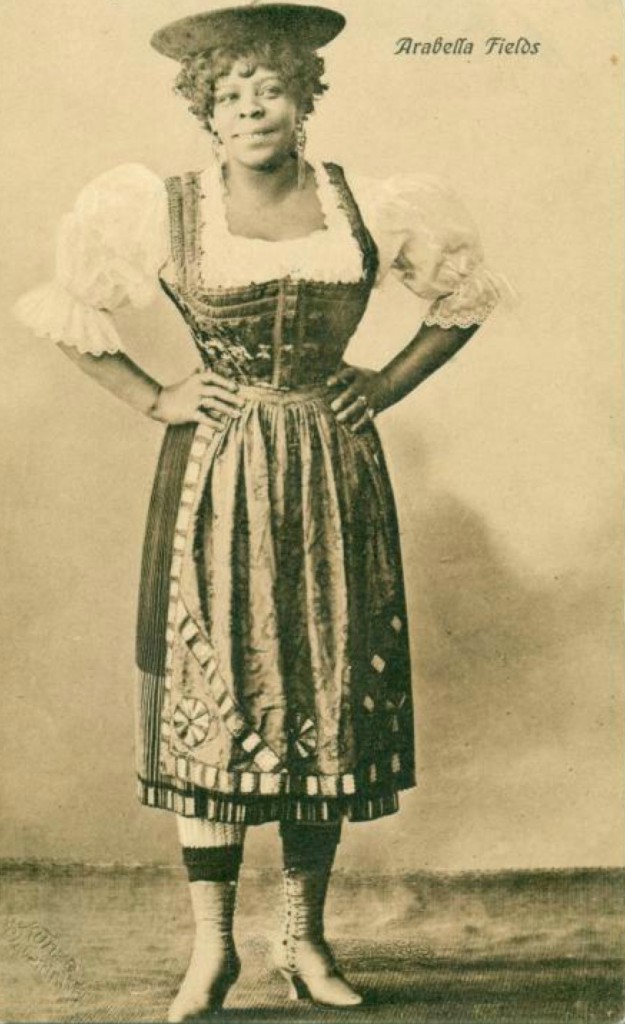
She was not the only Afro-American artist to adapt the Tyrolean style: the Four Black Diamonds dressed up in Lederhosen or leather shorts.

Next to singing, Arabella Fields acted in a few silent movies and at least in one sound film, Baroud (1933). This was the first and last talkie by the renowned director Rex Ingram. Arabella Fields plays the role of Mabrouka, the heroine’s servant. As was the custom then, she was stereotyped as an overweight, sharp-tongued, black mammy (a racist stereotype featured in a previous post).

